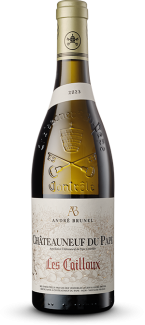- 2023
- 2020
- 2019
- 2018
- 2017
- 2016
- 2015
- 2014
- 2013
- 2012
- 2011
- 2010
- 2009
- 2008
- 2007
- 2006
- 2005
- 2004
- 2003
- 2002
- 2001
- 2000
- 1999
- 1998
- 1997
- 1996
- 1995
- 1994
- 1993
- 1992
- 1991
- 1990
- 1989
- 1988
- 1987
- 1986
- 1985
Châteauneuf-du-Pape Vintage 2021

There was more fear than damage in the Châteauneuf-du-Pape vineyards in 2021: the year passed without major difficulty while not only France but the whole planet was facing
climatic and sanitary disorders.As far as the local wine-growers can remember, never did a spring frost come so close to the heart of the Châteauneuf-du-Pape vineyard, raising fears of damage on the early-budding varieties, grenache, syrah and bourboulenc. Fortunately, this didn’t happen. Nevertheless the 2021 vintage is atypical and we have to look back 15 years to find similar climatic conditions or wine profile.
During the night of 7th to 8th April 2021, a cold episode affected almost all of France, hitting everything in its wake, worst of all the tree- and vine-productions. The windy climate and
proximity of the Rhône River meant that the Châteauneuf-du-Pape vineyards were more spared than most places. This exceptional climatic event affected the borders of the vineyards,
where temperatures of -1.5°C were reported (against – 7°C in other areas in the Vaucluse).After a particularly mild winter (+2.5°C above average in February) and a very cool spring, came a summer marked with several very hot -albeit short- episodes (mid-June, end of July and mid-August). Summer rainfall was reported between 55 and 77 mm. But thanks to beautiful rain showers early August, the maturing process of the grapes did not suffer from major water stress.
At the end of the summer, it was clear that the 2021 vintage would be a late one, a consequence of a rather long vegetative cycle (due to cool summer nights, among other factors), but also a vintage of uneven yields between the parcels that were affected by the frost and those that were not. Early September, the vineyard was in a perfect sanitary state, having been spared by mildew and showing little susceptibility to oidium. The stormy episodes around the autumn equinox slowed down the harvesting work, and in some cases, forced the vintners to change their picking process so as to adapt to the requirements of a vintage that is already described as a “wine-growers’ vintage”. The stripping of some parcels had positive impact as it allowed the berries to mature more quickly while preserving their quality potential.
The last plots were harvested early October. The first juices suggest lower alcohol degrees than in previous years (around 14 %) and intense colour (over 8). The beautiful acidity of the vintage bears the promise of good aging potential, but the wines can also be drunk and enjoyed in their youth.
The 2021 crop should be 20 to 25% below average in quantity (92.000 hl). End of July, the wine stocks
were almost identical to those of last year. A comforting stability after 2 complicated years businesswise (US taxes, Brexit, lock-downs), which confirms -if need be- the strong interest of consumers around the world for Rhône Valley wines and more particularly for those of Châteauneuf-du-Pape.



